Moving to a smaller home? We spoke to a couple of experts to find out how to downsize without compromising comfort or lifestyle
You spend most of your adult life aiming for a bigger, better house, slowly moving from the bachelor flat you had as a student to a townhouse as a young, married couple and finally to a family home with a garden and swimming pool when you had children. Then suddenly downsizing becomes an attractive option. Perhaps you want to travel more and need a practical lock-up-and-go property, or the kids have left home and you’re rattling around in a big, empty house, or you just want a smaller place that’s easier to maintain. Whatever the reason, there are ways to downsize without compromising your lifestyle.
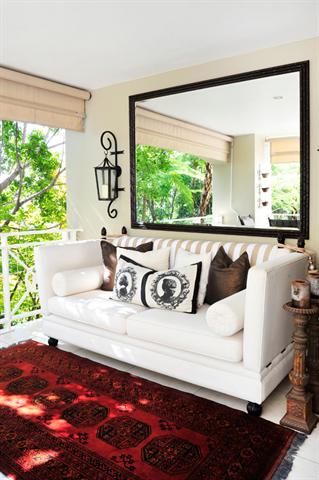
PLANNING IS ESSENTIAL
The trick to downsizing starts when you’re house-hunting. It may sound obvious but some people don’t analyse the way they live and buy accordingly – after all, it’s your home you want to downsize, not your lifestyle. If you enjoy a braai every Sunday, you are going to find it a hassle moving to a complex where braais are only permitted in the communal entertainment area. If you only braai occasionally, that’s not going to be a problem. “Downsizing and letting go of all the things you had can be liberating,” says Claire Clarke of By Dezign, who recently moved into a smaller house closer to her office. “But you have to be brutal about what’s going to work for you. The most important thing about downsizing is maintaining the lifestyle you lead. It’s much easier to accept living in a smaller space if you’re still living the same lifestyle.”
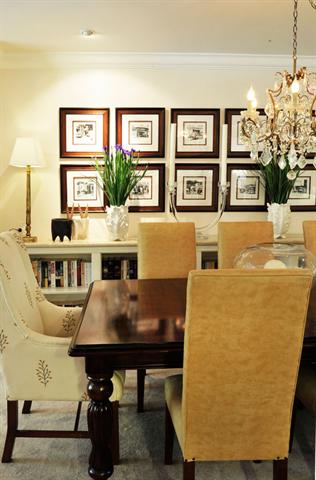
“Moving can be very stressful, but it can be fun too,” adds Gi Alston of Design for Living. “Many people look at downsizing as an opportunity to start afresh and often relish the opportunity to get rid of their old furniture and buy new pieces, particularly if their furniture is dated.” If you’d like to keep most of your old furniture, but you’re not sure it’s going to fit, Claire advises you measure it, then go to your new home and mark the dimensions of each piece out on the floor using masking tape to see what it will ‘look’ like in the room. Alternatively, cut out the size of your sofa, for example, in newspaper, then lay the template in the new room. Although it’s only two dimensional, it’ll give you a good idea of whether the furniture will fit or not.
Claire also suggests drawing up a plan to give you an idea of what you have to work with, drawing in the walls, pillars and other unmoveable structures then adding in your furniture. “Don’t worry too much about the bathrooms, as plumbing can be easily moved,” she says. She also recommends a good website, homestyler.com/designer, which allows you to draw up your own design for free and play around with your furniture placement. “Once you’ve found the right home, there are many tricks to make a smaller space work for you,” says Gi. “Curtains take up space so consider blinds instead. Make use of every nook and cranny and be creative. A lot of smaller homes don’t have dining rooms or, if they do, they’re much smaller.
Look for furniture that is multifunctional, like a coffee table that’s slightly bigger and higher so you can have a meal around it when you have guests or buy a dining table that can extend when you need a larger table. Storage space is very important. Build cupboards in recesses, use the space underneath the stairs and ensure your kitchen cupboards go all the way to the ceiling. Put up shelves in your garage. If you have a built-in braai in a courtyard, build a cupboard underneath the braai for all your outdoor utensils.”Use your wall space too. Claire Clarke cleverly used a wall to display a client’s collection of walking sticks, which belonged to her late husband and she didn’t want to part with.
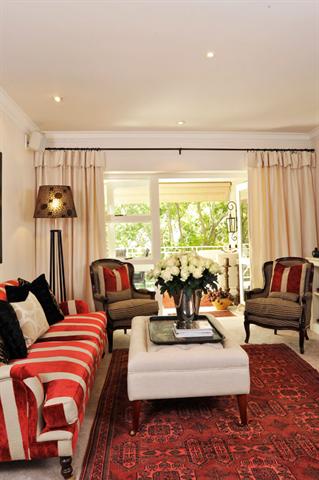
DECLUTTERING
Professional organiser Leanne Host of Get Organised, and president of the Professional Organiser Association Africa, recommends people start sorting out their belongings at least six months before they move.“If you have doubts about any item, you need to ask yourself if you need it, use it or absolutely love it. If there’s not a resounding yes to at least one of those questions, then the item must go,” says Leanne, adding that you must be ruthless when it comes to throwing out possessions. If you’re the type of person who keeps things for sentimental reasons, hiring a professional organiser is probably your best bet as they have no attachment to anything you have and can look at it objectively.
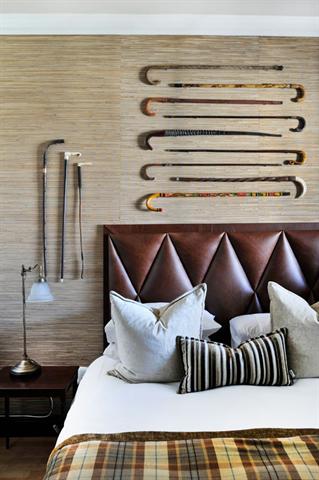
Expect to pay R200 – R400 an hour for a professional organiser. However, there probably are a few decor items you can’t bear to get rid of yet have no room for. In this case, Gi Alston recommends you put them in a box for a year or so, then swap them around with items in your house to create a fresh look. Apart from that box, generally putting things in storage is not a good idea, says Leanne. “If you’re not using an item, you clearly don’t need it so why hang on to it?” she says. “It just creates more clutter. And remember, people are not things so don’t hang on to items associated with loved ones. Just keep good memories of them instead.”
When sorting through your belongings, sort them into four piles: keep, sell, donate to charity and throw away. “You can make some money by selling furniture, clothing and equipment that’s in good condition. There are a number of second-hand shops, selling everything from antiques to vintage clothing, that’ll gladly buy your furniture or clothing, while websites such as Bid or Buy and Gumtree are perfect for getting rid of things like your children’s old bicycles or jungle gym,” says Leanne.
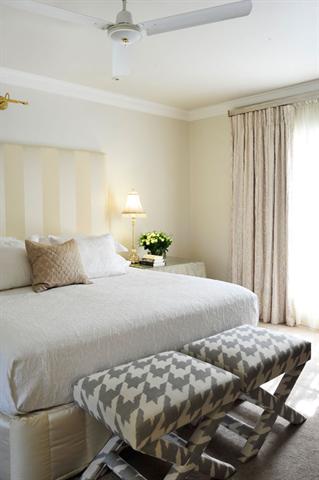
With your charity pile, allow family, friends and your domestic workers to pick out what they’d like, then call a charity that’s close to your heart or in dire need of goods and donate any unwanted belongings that are still in good condition to them. Many charities will come and collect them from you. Finally, throw away anything that’s broken or in poor condition – don’t promise yourself you’ll fix it when you move into your new home. “I believe that if you haven’t had something fixed within a month after it breaks, you’re probably not going to,” says Leanne. “And if you’re living without it, then you don’t need it.” Once you’ve sorted out your belongings, you can move into your new home feeling liberated, as Claire says, and appreciate the reason you moved there. Enjoy!

